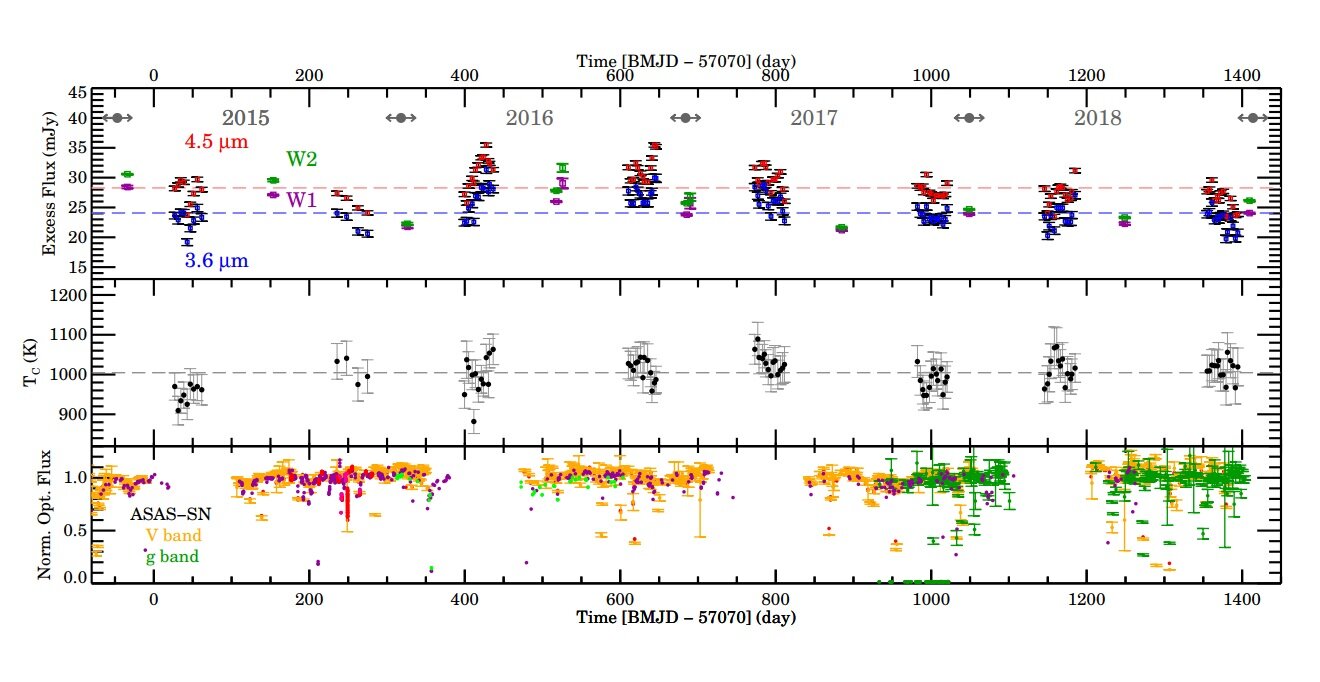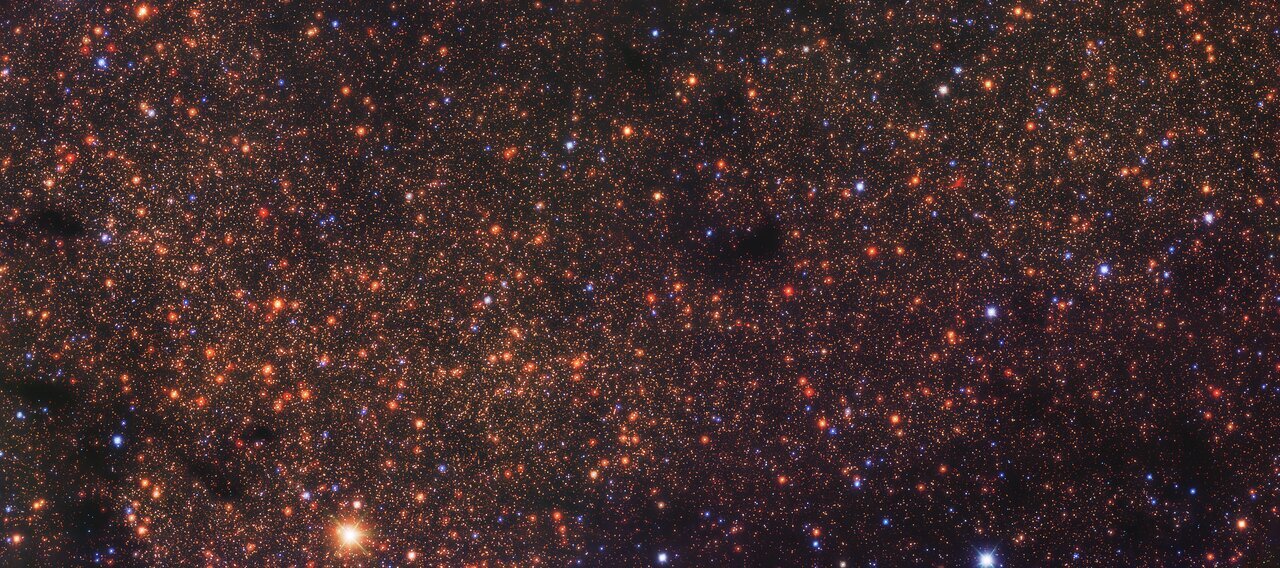Using NASA’s Spitzer and WISE space telescopes, astronomers from the Steward Observatory and elsewhere have observed a well-known variable star designated RZ Piscium. They found that the star’s circumstellar debris disk is compact and highly perturbed. The finding is reported in a paper published October 18 on the pre-print server arXiv.
RZ Piscium (or RZ Psc for short) is a UX Orionis type variable star located some 600 light years away in the constellation of Pisces, estimated to be between 30 and 50 million years old. The star is known to showcase sharp irregular optical dips over the past five decades, pointing to the presence of a substantial mass of gas and dust orbiting it.
Previous observations have found that RZ Piscium hosts a circumstellar dust disk and a red dwarf companion (with a mass of about 0.12 solar masses) at a projected separation of 22 AU. The disk orbits the primary star but the secondary star most likely has a significant impact on the disk itself such as truncating the disk outer edge and heavily stirring the remaining planetesimals.
A team of astronomers led by Kate Su of the Steward Observatory in Tucson, Arizona, decided to take a closer look at the disk of RZ Piscium, hoping to shed more light on its nature and properties. They analyzed multi-year monitoring data from Spitzer and WISE to probe mainly the short- (weekly) and long-term (monthly to yearly) infrared variability of this disk.
“We present multiyear infrared monitoring data from Spitzer and WISE to track the activities of inner debris production/destruction in RZ Psc. Millimeter observations along with the SED [spectral energy distribution] modeling provide a good assessment of the overall disk properties,” the researchers explained.
The study found that RZ Piscium has a close to edge-on, highly perturbed disk with an inner radius of 0.1 AU and an outer radius of 12 AU. The disk has an estimated dust mass between 0.0064 and 0.04 Earth masses, carbon monoxide mass of less than 0.00001 Earth masses, what yields a very low gas-to-dust mass ratio.
Therefore, the findings suggest that RZ Piscium hosts a gas-poor debris disk and has evolved out of the gas-rich protoplanetary disk stage. The observations also revealed that the debris emission in the disk varies on a weekly scale, and the longest period without a large degree change is about two weeks.
According to the authors of the paper, the analysis of the available data indicates that RZ Piscium has experienced intense collisional activity, equivalent to total destruction of a 90-km-wide asteroid every year. Such activity may be a result of planetary migration or planet-planet scattering. The astronomers added that the disk of RZ Piscium is highly perturbed either by recently formed giant planets and/or by its low-mass companion.
More information:
Kate Y. L. Su et al, RZ Piscium Hosts a Compact and Highly Perturbed Debris Disk, arXiv (2023). DOI: 10.48550/arxiv.2310.12336
Journal information:
arXiv
2023 Science X Network
Citation:
Variable star RZ Piscium has a compact and highly perturbed debris disk, study finds (2023, October 26)
retrieved 28 October 2023
from
This document is subject to copyright. Apart from any fair dealing for the purpose of private study or research, no
part may be reproduced without the written permission. The content is provided for information purposes only.




